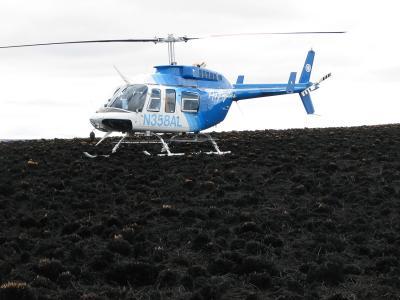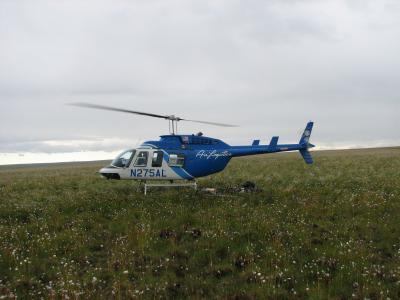Despite the size and severity of the massive 2007 Anaktuvuk River fire on Alaska's North Slope, much of the arctic vegetation has recovered and the tundra is likely to return to its pre-fire condition according to University of Alaska Fairbanks scientist Syndonia "Donie" Bret-Harte and colleagues in a recent scientific paper.
In April 2007, a wall of smoke was visible 23 miles south of the fire at the UAF Institute of Arctic Biology Toolik Field Station where Bret-Harte, co-authors and other scientists had several arctic research projects underway. Tundra fires on the North Slope are historically rare events and, as they watched the smoke, they recognized an important research opportunity was unfolding.
"Most tundra fires are small and go out quickly," said Bret-Harte, a plant ecologist at IAB. "They are usually ignited by lightning and burn with very light severity, but this was clearly different."
The smoke was so thick it triggered a shutdown of one of the turbines along the trans-Alaska pipeline.
In 2008, once funds were secured, Bret-Harte and colleagues began a project assessing the fire.
Their results were astounding. The fire, which was caused by a lightning strike, burned 401 square miles, was visible from space and doubled the cumulative area of tundra burned in the Alaska Arctic in the past 50 years. The combustion of tundra plants and soils released 2.1 teragrams, or 2.3 million tons, of carbon into the atmosphere, an amount similar to the carbon stored by tundra biomes worldwide.
"When I flew over the burn in 2008, it was all black. It looked like nothing was alive," said Bret-Harte. "We thought that vegetation would come back, but suspected that it might be really different from what was there before."

In June 2008, a little more than a year after the massive Anaktuvuk River fire on Alaska's North Slope, a helicopter used to ferry researchers from the University of Alaska Fairbanks, Institute of Arctic Biology, Toolik Field Station to the Anaktuvuk River fire burn site sits in stark contrast to the burned and seemingly lifeless tussock tundra.
(Photo Credit: Photograph courtesy of Marion Syndonia Bret-Harte/IAB.)
In 2011, Bret-Harte and colleagues, some from the original fire study group, set about studying the vegetation recovery in plants and soils in the burned area.
"We wanted to assess whether post-fire plant succession resulted in a mixture of shrubs and sedges similar to what was there before the fire or whether this area could be on a new successional trajectory leading to a different outcome," said Bret-Harte.
Bret-Harte's group collected plants and soils from plots along six, 50 meter-long transects in areas that were unburned, moderately burned and severely burned. They collected, measured and catalogued the above- and below-ground parts of vascular plants, such as deciduous and evergreen shrubs, wildflowers and grasses, and non-vascular plants, such as lichens, moss and liverworts.
"We found that vegetation recovery was consistent with what has been observed after other tundra fires, despite the unusual severity and size of this fire," Bret-Harte said. "Vegetation had not reached pre-fire levels, but had clearly begun to recover."
Although greater permafrost thaw and vegetation change are expected as climate warming in the Arctic continues, the authors conclude that the Anaktuvuk River fire does not seem to have pushed the tundra over a tipping point and dramatically changed the landscape.
"It's surprising that this massive fire has done what other, smaller fires have done," Bret-Harte said. "It hasn't dramatically changed the landscape, at least not yet."
Bret-Harte and colleagues published their findings in the July 2013 issue of the science journal Philosophical Transactions of the Royal Society B.

In July 2010, a little more than three years after the massive Anaktuvuk River fire on Alaska's North Slope that left the area blackened and charred, a helicopter used to ferry researchers from the University of Alaska Fairbanks, Institute of Arctic Biology, Toolik Field Station to the Anaktuvuk River fire burn site sits among new tussock tundra growth.
(Photo Credit: Photograph courtesy of Marion Syndonia Bret-Harte/IAB.)
Source: University of Alaska Fairbanks